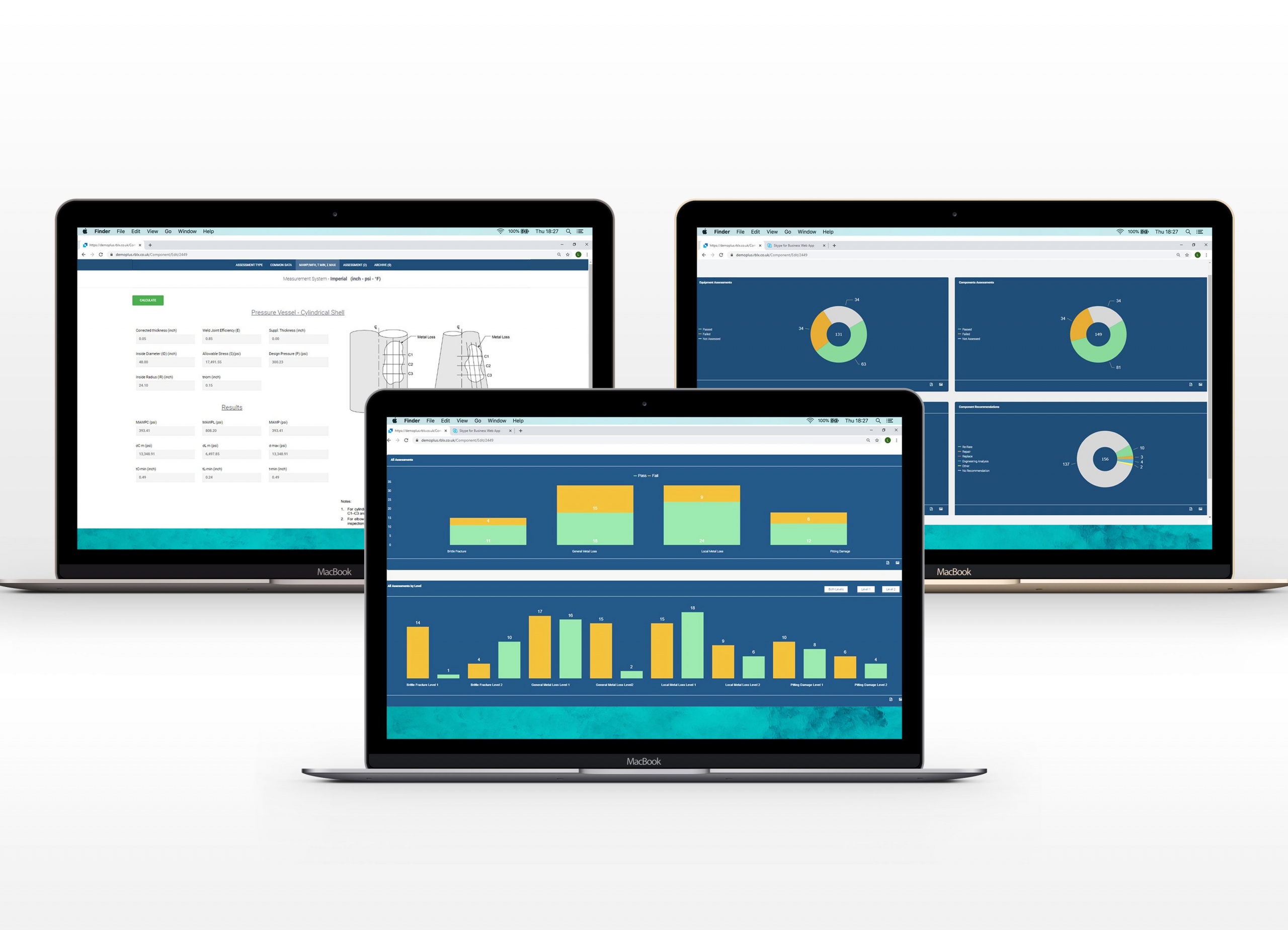FITNESS FOR SERVICE (FFS) ASSESSMENT SOFTWARE
FITest Fitness-For-Service (FFS) assessment software can be used to evaluate pressurized components containing flaws or damage. If the results of an assessment indicate that the equipment is suitable for the current operating conditions, then the equipment can continue to be operated at these conditions provided suitable monitoring/inspection programs are established. If the results of the Fitness for Service assessment e indicate that the equipment is not suitable for the current operating conditions, then the software will recommend remediation.
FITest Data Requirements:
- Original Equipment Design Data
- Maintenance and Operational History
- Specific requirements for data measurements and flaw characterization based on the damage mechanism
FITest Assessment Levels:
Level 1 Assessment
The assessment procedures included in this level are intended to provide conservative screening criteria that can be utilized with a minimum amount of inspection or component information.
Level 2 Assessment
The fitness for service assessment procedures included in this level are intended to provide a more detailed evaluation that produces results that are more precise than those from a Level 1 assessment. In a Level 2 Assessment, inspection information similar to that required for a Level 1 assessment is needed; however, more detailed calculations are used in the evaluation.
FITest Remaining Life Assessment:
Once it has been established that the component containing the flaw is acceptable at the current time, FITest software will determine a remaining life for the component. The remaining life is used to establish an appropriate inspection interval, and in-service monitoring plan, or the need for remediation.
FITest Remediation
FITest will provide appropriate remediation methods, for example where a flaw is not acceptable in its current condition; the estimated remaining life is minimal or difficult to estimate, or the state-of-the-art analysis/knowledge is insufficient to provide an adequate assessment.
FITest In-Service Monitoring
In-service monitoring is one method whereby future damage or conditions leading to future damage can be assessed, or confidence in the remaining life estimate can be increased. Appropriate in-service monitoring methods which typically suggested by FITest, include corrosion probes to determine a corrosion rate; hydrogen probes to assess hydrogen activity; various ultrasonic examination methods, and acoustic emission testing to measure metal loss or cracking activity; and measurement of key process variables and contaminants.
FITest Key Features:
- Web-based with robust security
- Compliant with API 579/ASME FFS-1
- General & Local Metal Loss, Pitting, etc.
- Automated Level 1 and Level 2
- Recommendations for Level 3 Assessment
- Integrity Assessment of Ageing Assets
- Supports Cylindrical & Spherical Shells, Formed Heads, Storage Tank Plates and Shells, etc.
- Evaluation for Continued Services
- Evaluate Current Conditions & predict remaining life
- Increase safety, reduce costs & Shutdowns
FITest Key Functions:
- Quantitative Engineering evaluations
- Demonstrate Structural Integrity of Component
- Assessment Methodologies Specifically Prepared for Pressurized Equipment
- RUN-RERATE-REPAIR-REPLACE Decisions
- Remaining Life Calculations

LifeTech Engineering Ltd.
Unit 13, Innovation Centre,
Aberdeen Energy Park,
Exploration Drive, Bridge of Don,
Aberdeen, AB23 8GX, UK.
Phone: +44 (0) 1224 824112